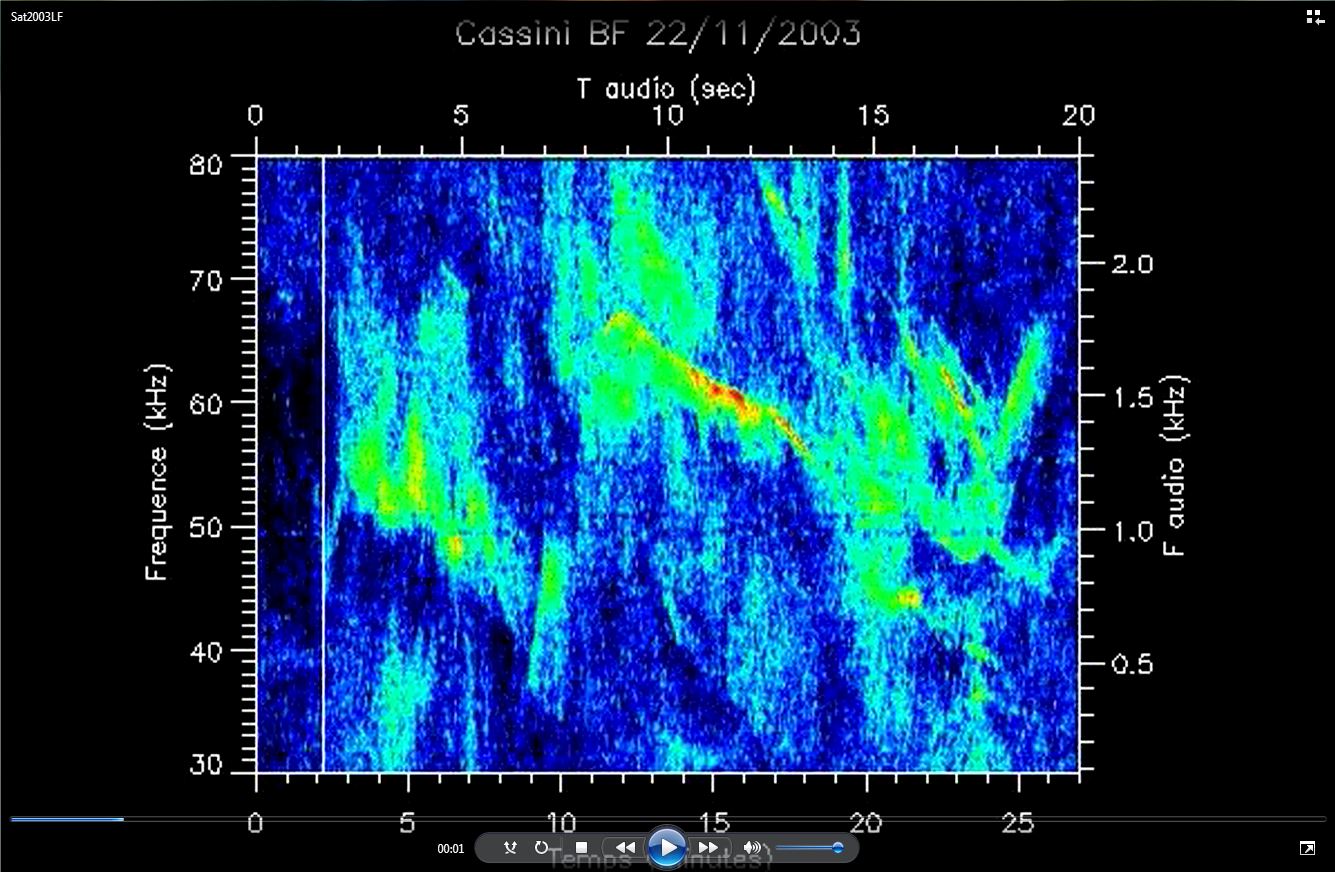Celestial bodies emit no sound, which in any case would not be able to cross the vacuum of space. They send us visible and invisible light (radio waves, X-rays, etc.). Light is made up of electric and magnetic waves which can cross the vacuum of space ; they are defined by their frequency (the number of oscillations per second) and their intensity. High frequencies correspond, for example, to X-rays or to ultra-violet rays, medium frequencies to visible light, and the low frequencies to infra-red and radio waves.
Astronomers analyze this light, and synthesize images in which the distribution of brightness is a function of time and frequency. These latter are not unlike sonograms or musical scores (which also describe the distribution of acoustic intensity as a function of time and acoustic frequency … the trebles and basses, for example).
Here, the light emitted by the celestial bodies has been transposed to sound waves, in exact accordance with the distribution of intensity as a function of time and frequency (in fact, the frequencies have been transposed to the audible range while compressing the time).
These "sound pictures ", and the observations from which they are synthesized, are a source of information about the rotation of the celestial bodies, their magnetic fields, the charged particles in their vicinity, etc.
Philippe Zarka, CNRS Research Director at the Paris Observatory

